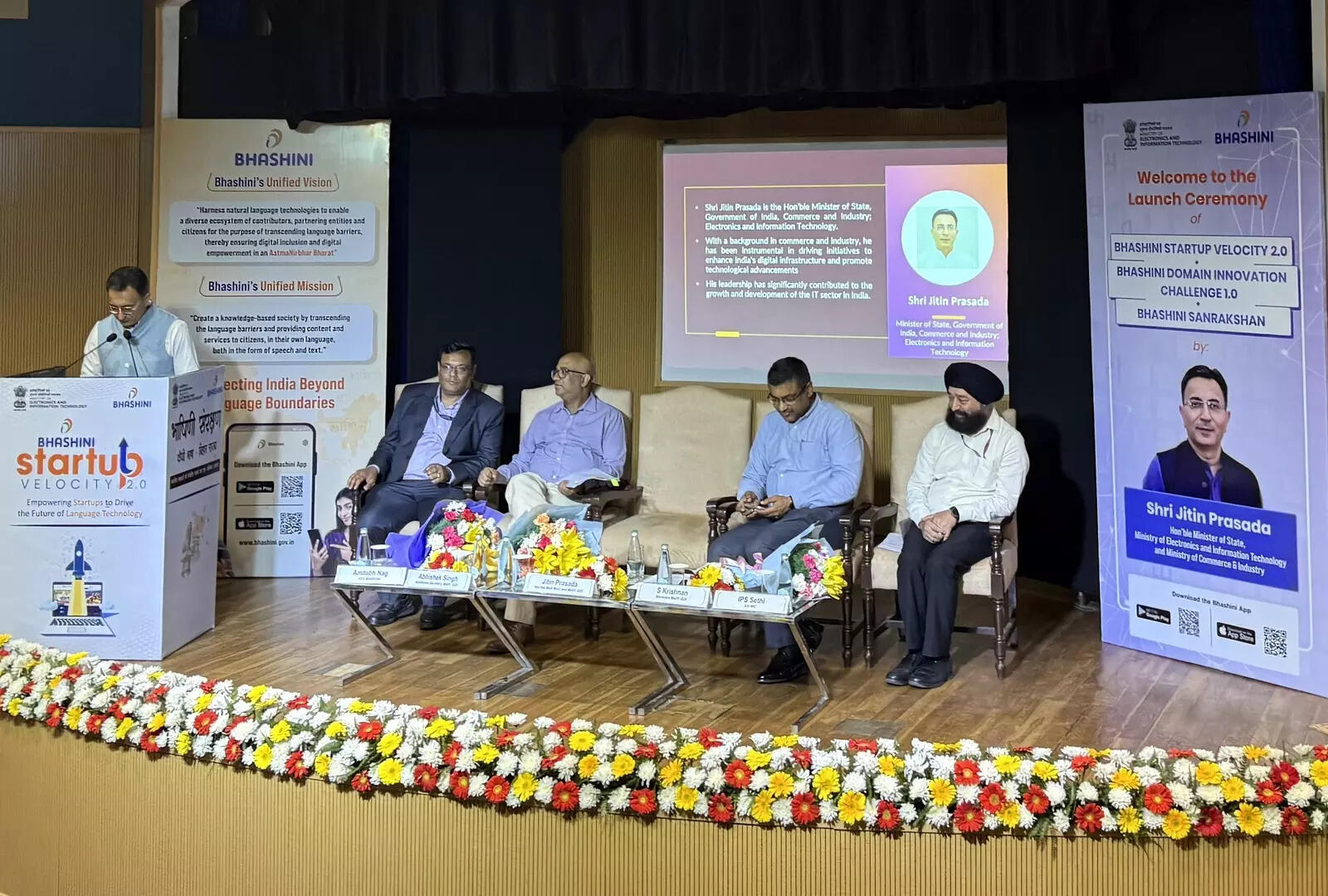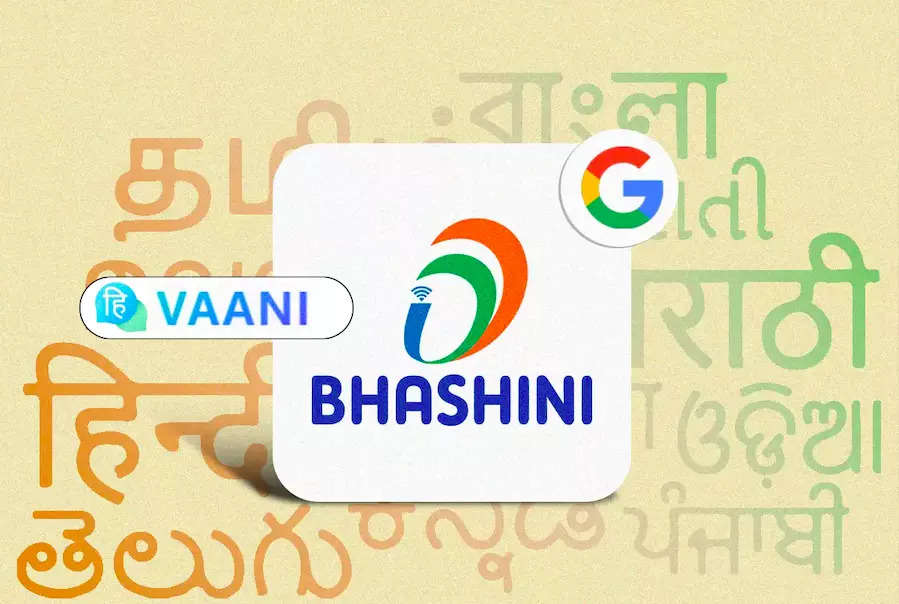
“What we are witnessing today is not just the launch of another technology initiative, but the crystallization of a collaborative vision for Digital India—one that puts voice, vernacular, and inclusivity at its heart.”
With these words, S. Krishnan, Secretary, Ministry of Electronics and IT, offered more than an address—he summoned a new digital consciousness. On an evening charged with quiet ambition and civic intent, Krishnan’s voice resonated with clarity and urgency, setting the tone for a gathering that was less a ceremonial milestone and more a call to action.
Jitin Prasada, Union Minister of State, Ministry of Electronics & IT, Ministry of Commerce & Industry, the Chief Guest at the event, reinforced that sentiment with equal conviction. The Bhashini Startup Velocity 2.0: Bhashini Domain Innovation Challenge 1.0, he said, was not merely a technological gathering—it was a social movement.
“Bhashini is at the forefront of the government’s efforts to democratize the digital sphere. Through the Bhashini initiative, governance of the country is being made accessible to all citizens in their own language,” the Minister of State affirmed.
Also addressing the event were Abhishek Singh, Additional Secretary at the Ministry of Electronics and IT, and Inder Pal Singh Sethi, Director General of National Informatics Centre, alongside a vibrant audience of young developers, government officials, and entrepreneurs. The event was helmed by Amitabh Nag, CEO of Bhashini.
The evening marked a decisive moment in India’s digital journey—where policy meets platform, and where the dream of a truly multilingual digital public infrastructure edges closer to reality. And yet, what unfolded was more than technology—it was a reaffirmation of identity, access, and the right to be heard in one’s own language.
At the heart of this effort lies a simple yet powerful proposition: that voice is not just a tool—it is a right. In a country as linguistically diverse and socially layered as India, voice-based, language-inclusive technology is no longer a luxury. It is the only way forward.
Krishnan’s speech, suffused with vision and grounded pragmatism, captured the spirit of the evening. But it was Amitabh Nag, CEO of Bhashini, who opened the event, offering a holistic view of how the platform is already transforming access to governance, employment, healthcare, and justice—one sentence, one voice, and one language at a time.
Together, their words offered a glimpse into a future where India speaks—and is heard—in all its tongues.
“These Are Not Just Hackathons. These Are Commitments.”
Opening the evening, Amitabh Nag said: “Today, we are launching three innovative hackathons designed to harness the power of natural language processing, language technology, and AI to address real-world challenges.”
From the outset, his focus was clear: solutions that don’t remain buried in labs but move into people’s hands, homes, and hopes.
Nag walked the audience through a growing constellation of partnerships: with Maharashtra, where a state-level hackathon was conducted; with the National Police Academy and NCRB to enhance access to justice; with Microsoft and Kindril to enable multilingual voice-based banking services; and with Lok Sabha, to digitally preserve parliamentary debates from the early decades of the Republic.
These were not academic exercises, he emphasized, but ground-level interventions. “In Rajasthan, we worked with NIC to solve a simple problem—birth data wasn’t being recorded due to digital divides. So, we enabled voice-based form filling in the Pajan app. Today, it’s rolled out across the state.”
He spoke of upcoming breakthroughs: “With the Central Information Commission, we’re enabling citizens to file second appeals just by speaking into a portal. That’s how governance becomes accessible.” A similar project in Gujarat is piloting voice-driven grievance filing combined with sentiment analysis.
Among the most promising projects is one with the Ministry of Youth Affairs, tied to the MY Bharat portal—a platform with over 30 crore users. “We are developing a voice-based CV builder so that anyone, anywhere, can build a resume simply by speaking,” Nag said. “That’s inclusion at scale.”
He described how Bhashini is now embedded in the machinery of government itself. “We’ve enabled voice dictation in e-Office. Officers can now record notes in their own languages—it’s a huge leap in productivity.” The next rollout: tools that automatically transcribe and summarize minutes of meetings in real-time.
He also provided some insights on the next frontier. “We’ve already deployed speech-to-speech translation. But now we’re developing its next variant: enabling two individuals who don’t share a common language to communicate at railway stations, airports—even immigration desks.”
On the issue of linguistic heritage, Nag said: “In Bihar, Jharkhand, and parts of Bengal, land records are written in Kaithi—a forgotten script. These records are not machine-readable. People cannot access their own land histories.”
“We are challenging startups to build OCR and AI models that can decode Kaithi. If we succeed, thousands of marginal landowners will reclaim what is rightfully theirs,” he announced.
“These hackathons are not just innovation exercises. They are our commitment—to use technology to solve real-world problems, expand digital public services, and give every Indian a voice.”
A Broader Canvas: Krishnan’s Call for Digital Empathy
If Nag spoke as a technocrat, S. Krishnan spoke as a visionary. He framed Bhashini not merely as a platform but as a blueprint for inclusive governance.
“What we are building through the IndiaAI Mission and Bhashini is a collaborative model of technological development—one where platforms are open, use cases are real, and voices are central,” he said. “We are not just deploying code. We are cultivating access.”
For Krishnan, voice wasn’t just a technical interface—it was a democratic imperative. “Not everyone in India is going to be able to type on a laptop or a smartphone. But everyone can speak. Everyone has a voice. And that is what we must tap.”
He went further: “Voice-to-text, voice-to-voice, translation between languages—these are not conveniences. They are gateways to rights, to justice, to opportunity.”
Krishnan’s speech deepened into a meditation on language, culture, and dignity. “Preserving our languages is about more than nostalgia. It’s about inclusion. If someone speaks a dialect that is not recognized or supported, they become invisible in the digital world.” He commended Bhashini’s efforts to integrate not just major Indian languages, but minor dialects and endangered scripts like Kaithi, which are being revitalized through AI.
“This is a national mission,” he said. “And yes, it is a hard task—collecting voice samples, annotating data, building models. But in the process, we are creating employment at the grassroots. We are inviting people to build this nation—by simply speaking in their own mother tongue.”
Adding weight to the evening’s vision, Abhishek Singh, Additional Secretary at MeitY, observed: “With projects like Bhashini, we will be able to empower the 500 million unconnected Indians to access online services through voice mode.”
Later, he reinforced the guiding philosophy behind this effort: “AI must work for social good. Bhashini is an effort in this direction.”
Krishnan closed with a line that lingered long after the applause faded: “The Prime Minister often tells us: it’s important not only to reform and perform—but also to inform. Events like this help us do all three.”
The Bhashini Mandate: Technology with an Accent
At the core of every address that evening was Bhashini—short for BHASHA Interface for India—a bold and inclusive attempt to create open-source AI language models for India’s 22 scheduled languages. Its goal: make digital services accessible in every language, through every voice, and for every Indian.
Whether it’s applying for a job, checking a bank balance, or reading a health record, Bhashini envisions a world where no citizen needs to navigate English or master keyboards to claim their rights.
India is not just adapting global technology—it is reshaping it. In the process, it is creating a new paradigm:
Where language is not a barrier but a bridge,
Where technology speaks with an Indian accent,
And where the future listens—to every voice.
(Anoop Verma author is Editor-News, ETGovernment)



